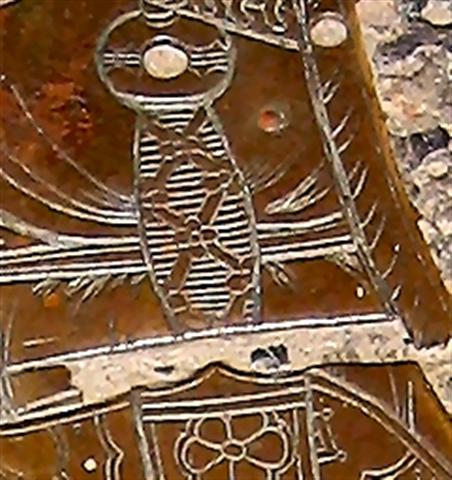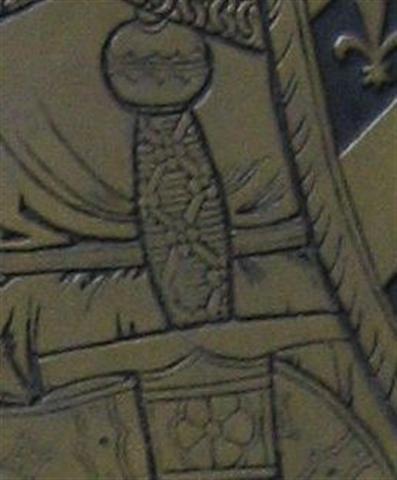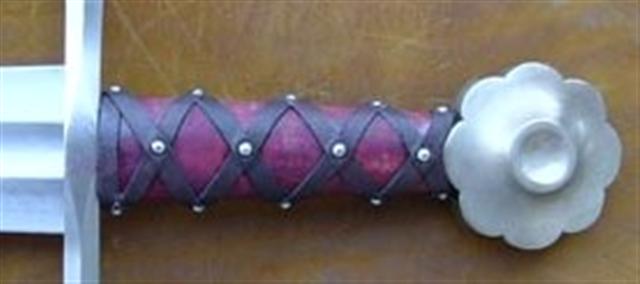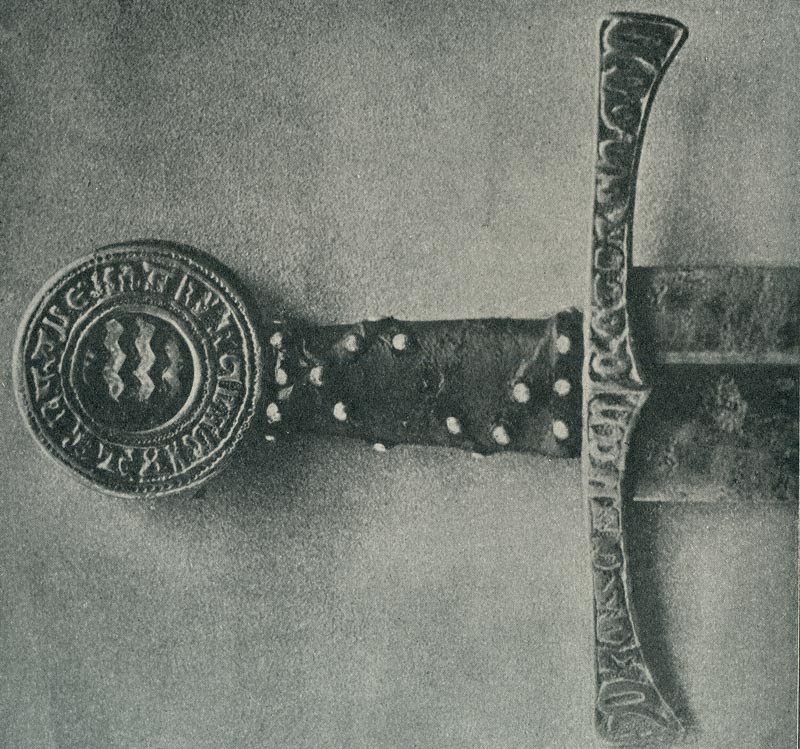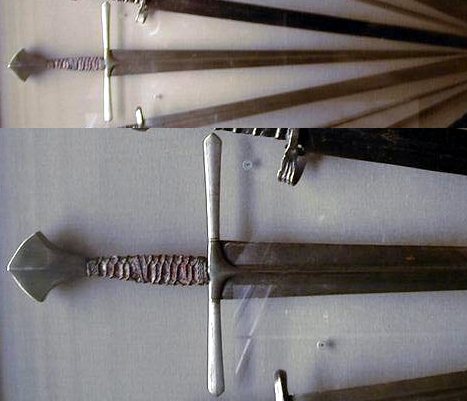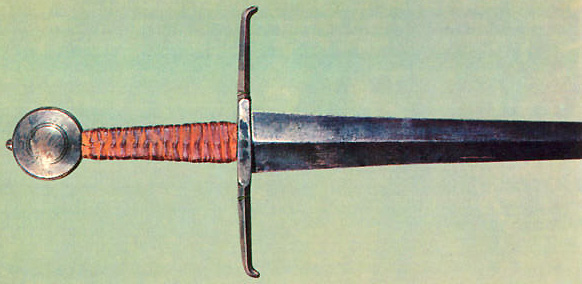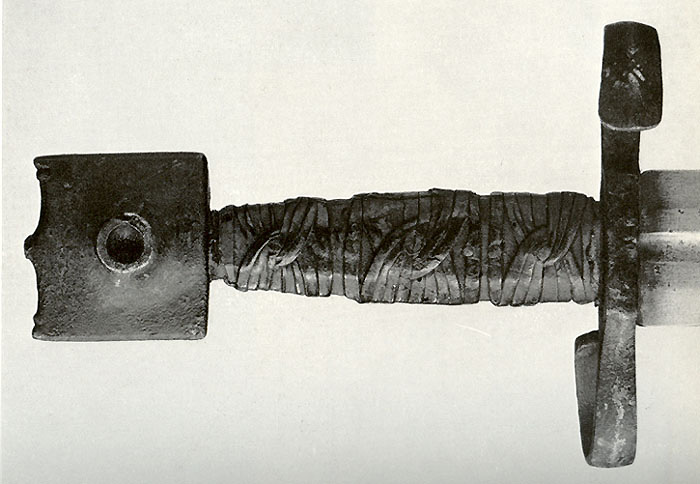Posts: 1,757 Location: Storvreta, Sweden
Mon 10 Aug, 2009 12:10 pm
Julien,
One famous surviving example of this style of grip is the sword of Can Grande della Scala in Verona. it was found in is grave and is now on display in the Castel Vecchio.
I saw it during a ressearch trip now almost ten years ago....
It is a splendid little sword. Probably a type XII, although it is rusted into the scabbard (covered in red velvet with gilded chape and lockets.
The grip is bound with fine silver wire and has red silk cord knotted in a criss cross pattern over it. The silk cord has rotted away in most places, but the pattern is visible in the corrosion of the silver, and some knots and some sections of cord do survive in places.
My impression is that in general the criss-cross binding was done over some kind of under wrap.
Combination of materials would have varied greatly. In some effigies you can make out that the under-material has been stamped, or patterned somehow. I read that as leather being impressed with tools. No examples survive as far as I know.
The sword of the Infante de la Cerda, found in his coffin (published by
Oakeshott in his "Records" page 70) shows another version of the technique, where cord is artfully bound and knotted to form both under-wrap and criss-cross pattern in one go. An advanced from of macramé.
Yet another example publishedby Oakeshott is "The Sword of Santa Casilda" page 84. it has smooth leather under wrap with leather strip in criss-cross binding on top, secured by gilt pins. This grip is the direct inspiration for the grip of the Chevaliere of the NG line.

